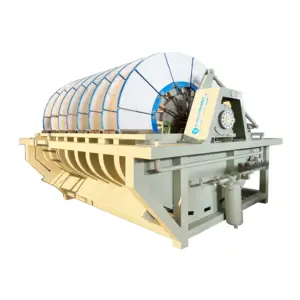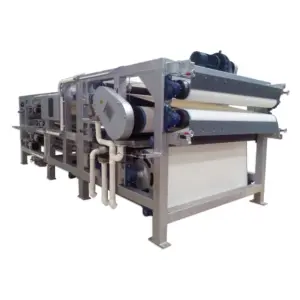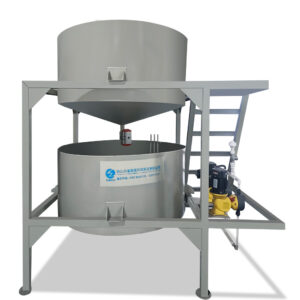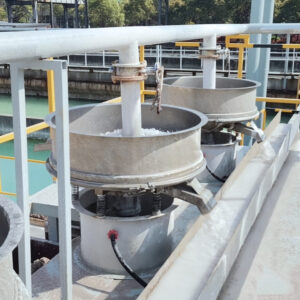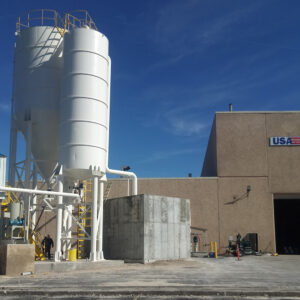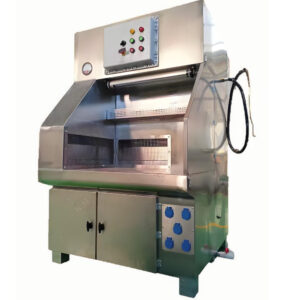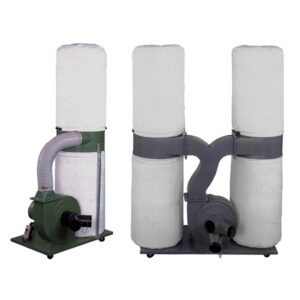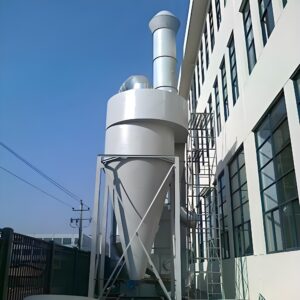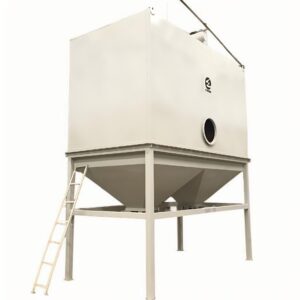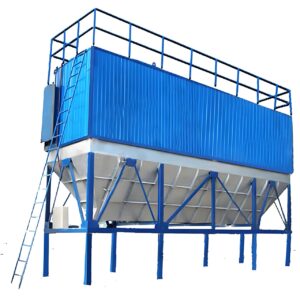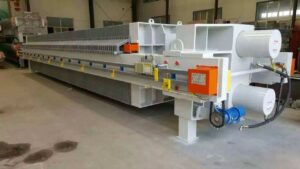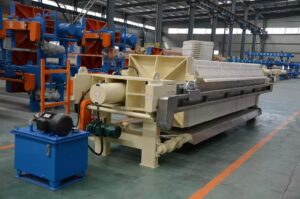Ahşap işleme endüstrisi, operasyonel verimliliği korurken hava kalitesini iyileştirmek için artan bir baskıyla karşı karşıyadır. Ahşap üretim tesisleri, çalışanların güvenliğini, ürün kalitesini ve mevzuata uygunluğu tehlikeye atabilecek önemli miktarda toz, ahşap partikülleri ve havayla taşınan kirleticiler üretir. Kart işleme filtreleri kritik bir çözümdür, ancak birçok tesis performans ile işletme maliyetlerini dengeleyen etkili filtreleme sistemlerini seçmekte, uygulamakta ve sürdürmekte zorlanmaktadır.
Uygun filtreleme olmadan, ahşap işleme operasyonları önemli sonuçlar doğurabilir: çalışanların solunum sağlığı sorunları, havadaki partiküllerden kaynaklanan yangın tehlikelerinin artması, toz birikimi nedeniyle ekipman ömrünün kısalması ve maliyetli para cezalarıyla sonuçlanabilecek potansiyel mevzuat ihlalleri. Ahşap tozunun birikmesi ayrıca ürün kalitesini tehlikeye atabilir ve tesis yöneticileri için bakım kabusları yaratabilir.
Bu kapsamlı kılavuz, farklı filtreleme teknolojilerinin anlaşılmasından sistem performansını en üst düzeye çıkaran bakım stratejilerinin uygulanmasına kadar levha işleme filtrelerinin temel yönlerini araştırmaktadır. Pratik çözümleri inceleyecek, gerçek dünya örnek olaylarını analiz edecek ve ahşap endüstrisi filtrasyon sistemlerinizi optimize etmek için uygulanabilir bilgiler sağlayacağız.
Kart İşleme Filtreleri Nedir ve Neden Önemlidir?
Levha işleme filtreleri, kereste üretim süreçleri sırasında oluşan havadaki partikülleri, tozu ve kirleticileri yakalamak ve gidermek için tasarlanmış özel filtreleme sistemleridir. Bu sistemler, ahşap işleme tesislerinde operasyonel verimliliği sağlarken güvenli çalışma ortamlarının korunmasında çok önemli bir rol oynar.
PORVOO Temiz Teknoloji modern toplumların ahşap endüstri̇si̇ fi̇ltreleme sistemleri tipik olarak 0,3 ila 100 mikron arasında değişen partikülleri yakalar ve 5 mikronun üzerindeki partiküller için 99%'yi aşan verimlilik oranları sunar. Bu sistemlerin önemi temel toz toplamanın ötesine geçer - kapsamlı tesis yönetimi stratejilerinin ayrılmaz bileşenleridir.
Ahşap İşlemede Kirletici Türleri
Ahşap işleme operasyonları, farklı filtreleme yaklaşımları gerektiren çeşitli hava kaynaklı kirleticiler üretir:
| Kirletici Türü | Partikül Boyut Aralığı | Birincil Kaynaklar | Sağlık Etkisi |
|---|---|---|---|
| Kaba Ahşap Tozu | 10-100 mikron | Testere ile kesme, planyalama | Solunum yolu tahrişi |
| İnce Ahşap Parçacıkları | 0,5-10 mikron | Zımparalama, frezeleme | Derin akciğer penetrasyonu |
| Uçucu Organik Bileşikler | Moleküler seviye | Yapıştırıcılar, yüzeyler | Kimyasal maruziyet |
| Reçine Parçacıkları | 1-50 mikron | Kompozit üretim | Alerjik reaksiyonlar |
Kritik Performans Faktörleri
Levha işleme filtrelerinin etkinliği birkaç temel performans göstergesine bağlıdır. Hava akış kapasitesi, tesis büyüklüğüne ve işleme hacmine bağlı olarak tipik olarak 1.000 ila 50.000 CFM arasında değişir. MERV (Minimum Verimlilik Raporlama Değerleri) standartlarıyla ölçülen filtre verimlilik dereceleri, belirli kirlilik profilleriyle uyumlu olmalıdır.
Kereste işleme tesisleriyle çalışma deneyimimize göre, 11-16 arasında MERV değerlerine sahip sistemler çoğu ahşap işleme uygulaması için optimum performans sağlar. Ancak, işlenmiş kereste veya kompozit malzeme işleyen tesisler daha yüksek verimli filtreleme sistemleri gerektirebilir.
Ağaç Endüstrisi Filtrasyon Sistemleri Nasıl Çalışır?
Operasyonel ilkelerin anlaşılması kereste işleme filtrasyonu sistemler, tesis yöneticilerinin sistem seçimi ve optimizasyonu hakkında bilinçli kararlar almasını sağlar. Bu sistemler tipik olarak, her biri belirli partikül boyutlarını ve kirlilik türlerini hedefleyen birden fazla filtreleme aşaması kullanır.
Birincil Filtrasyon Mekanizmaları
İlk aşama tipik olarak daha büyük partiküllerin santrifüj kuvvetiyle uzaklaştırıldığı siklonik ayırmayı içerir. Bu ön ayırma, aşağı akış filtreleri üzerindeki yükü azaltır ve genel sistem ömrünü uzatır. Siklon separatörlerdeki hava hızları tipik olarak saniyede 50-100 feet arasında değişir ve 10 mikronun üzerindeki partikülleri etkili bir şekilde yakalar.
İkincil filtrasyonda torbalı veya kartuş filtre teknolojileri kullanılır. Torbalı sistemler, uygulama gereksinimlerine bağlı olarak 10.000 ila 100.000 fit kare arasında değişen yüzey alanlarına sahip kumaş filtre ortamı kullanır. Bu sistemler, tipik olarak 6 inç su sütununun altında tutulan basınç düşüşleri ile 1 mikronun üzerindeki partiküller için olağanüstü verimlilik gösterir.
Gelişmiş Filtrasyon Teknolojileri
Modern ahşap fabri̇kasi fi̇ltrasyon si̇stemleri̇ filtre ortamından biriken partikülleri otomatik olarak uzaklaştıran pulse-jet temizleme mekanizmalarını giderek daha fazla içermektedir. Bu sistemler, toz yükleme koşullarına bağlı olarak tipik olarak her 30-120 saniyede bir atım yapan programlanabilir döngülerle çalışır.
Ahşap İşleme Ekipmanları Birliği tarafından yürütülen sektör araştırmasına göre, pulse-jet temizleme sistemleri uygulayan tesisler, geleneksel çalkalayıcı tipi sistemlere kıyasla 40-60% daha uzun filtre ömrüne sahiptir. Bu da önemli ölçüde maliyet tasarrufu ve daha az bakım gereksinimi anlamına gelmektedir.
Sistem Entegrasyonunda Dikkat Edilecek Hususlar
Etkili filtreleme sistemleri, mevcut tesis altyapısıyla dikkatli bir entegrasyon gerektirir. Kanal tasarımı sistem performansını önemli ölçüde etkiler ve ana taşıma hatlarında önerilen hava hızları dakikada 3.500-4.500 fit arasında değişir. Uygun kanal boyutlandırması, enerji tüketimini en aza indirirken partikül çökelmesini önler.
Orman Ürünleri Araştırma Enstitüsü'nde Endüstriyel Hava Kalitesi Uzmanı olan Dr. Sarah Mitchell, "Başarılı bir filtreleme sistemi uygulamasının anahtarı, ahşap işleme operasyonlarınızın spesifik özelliklerini anlamakta yatıyor" diyor. "Genel çözümler nadiren en iyi sonuçları verir."
Ne Tür Levha Üretim Filtreleri Mevcuttur?
Çeşitlilik pano üretim filtreleri farklı ahşap işleme operasyonlarının çeşitli gereksinimlerini yansıtır. Her filtre tipi, tesis yöneticilerinin sistem seçerken dikkatle göz önünde bulundurması gereken farklı avantajlar ve sınırlamalar sunar.
Kartuş Filtre Sistemleri
Kartuş filtreler, küçük ve orta ölçekli ahşap işleme tesisleri için en yaygın filtrasyon çözümünü temsil eder. Bu sistemler tipik olarak 1.000-15.000 CFM arasındaki hava hacimlerini işler ve kompakt tasarım, kolay bakım ve nispeten düşük ilk yatırım maliyetleri gibi çeşitli avantajlar sunar.
Modern kartuş filtreler, kartuş başına 300-600 fit kare arasında değişen yüzey alanları sağlayan kıvrımlı ortam tasarımlarını kullanır. Pileli konfigürasyon, temiz olduğunda tipik olarak 2-4 inç su sütunu arasında olan makul basınç düşüşlerini korurken filtre kapasitesini artırır.
Bununla birlikte, kartuş sistemleri yüksek toz yüklemeli uygulamalarda sınırlamalarla karşı karşıyadır. Büyük hacimlerde malzeme işleyen tesislerde sık sık filtre değiştirilmesi gerekebilir ve bu da işletme maliyetlerinin artmasına neden olur. Ayrıca, kartuş filtreler kompozit levha üretiminde yaygın olan yapışkan veya reçineli partiküllerle mücadele edebilir.
Torbalı Filtre Teknolojileri
Torbalı sistemler, 50.000 CFM'yi aşan hava akışlarını işleyerek yüksek hacimli uygulamalarda mükemmeldir. Bu sistemler, 8-30 fit arasında değişen uzunluklara sahip kumaş filtre torbaları kullanır ve büyük filtreleme yüzey alanları sağlar. Kumaş ortam, partikülleri sıkıştırma, durdurma ve difüzyon dahil olmak üzere birden fazla mekanizma aracılığıyla yakalar.
Torba malzemeleri uygulama gereksinimlerine göre önemli ölçüde değişir. Polyester keçe torbalar standart ahşap tozu uygulamalarının üstesinden gelirken, PTFE membran torbalar ince partiküller ve zorlu malzemeler için üstün performans sağlar. Torba ömrü, çalışma koşullarına ve bakım uygulamalarına bağlı olarak tipik olarak 12-36 ay arasında değişir.
Özel Filtrasyon Çözümleri
Gelişmekte olan teknolojiler arasında birden fazla filtreleme prensibini bir araya getiren hibrit sistemler yer almaktadır. Bunlar geli̇şmi̇ş fi̇ltreleme si̇stemleri̇ siklonik ön ayırmayı yüksek verimli son filtreleme ile entegre ederek çeşitli partikül boyutu aralıklarında performansı optimize eder.
Elektrostatik çökelticiler, özellikle 1 mikronun altındaki ince partiküller için etkili olan bir başka özel çözümü temsil eder. Bu sistemler partikülleri çekmek ve yakalamak için elektrik yükleri kullanır ve mikron altı partiküller için 99%'yi aşan verimlilik oranlarına ulaşır.
Doğru Kereste İşleme Filtrasyon Sistemi Nasıl Seçilir?
Uygun seçim kereste endüstrisi filtreleri tesise özgü gereksinimlerin, operasyonel kısıtlamaların ve uzun vadeli maliyet hususlarının kapsamlı bir analizini gerektirir. Karar süreci, ilk satın alma fiyatının ötesinde birden fazla faktörü değerlendirmelidir.
Tesis Değerlendirme Parametreleri
İlk değerlendirme toz üretim oranlarını, partikül boyutu dağılımlarını ve kirlenme özelliklerini belirlemelidir. Yumuşak ağaç kereste işleyen tesisler tipik olarak bin tahta fit başına 2-5 pound toz üretirken, sert ağaç işleme bin tahta fit başına 3-8 pound üretebilir.
Hava hacmi gereksinimleri yakalama hızı ihtiyaçlarına ve tesis yerleşimine bağlıdır. Etkili toz yakalama, yakalama noktalarında dakikada 100-150 fitlik minimum hava hızları gerektirir; planyalama veya zımparalama gibi daha agresif işlemler için daha yüksek hızlar gerekir.
| Operasyon Türü | Toz Üretim Oranı | Önerilen Hava Hızı | Tipik Filtre Tipi |
|---|---|---|---|
| Testere | 2-4 lbs/MBF | 150-200 FPM | Baghouse |
| Planlama | 3-6 lbs/MBF | 200-300 FPM | Kartuş/Baghouse |
| Zımparalama | 5-12 lbs/MBF | 300-500 FPM | Yüksek verimli kartuş |
| Yönlendirme | 4-8 lbs/MBF | 250-400 FPM | Siklon + ikincil |
Performans Optimizasyon Stratejileri
Sistem boyutlandırması gelecekteki genişleme ve operasyonel esnekliği hesaba katmalıdır. Cılız sistemler aşırı basınç düşüşleriyle çalışarak enerji tüketimini artırır ve filtre ömrünü kısaltır. Tersine, büyük boyutlu sistemler verimsiz çalışabilir ve gereksiz sermaye harcaması anlamına gelebilir.
Filtre medyası seçimi uzun vadeli işletme maliyetlerini önemli ölçüde etkiler. Birinci sınıf medya başlangıçta 20-40% daha pahalı olsa da, genellikle 50-100% daha uzun hizmet ömrü ve daha iyi partikül yakalama verimliliği sağlar. Bu da daha düşük bakım maliyetleri ve daha iyi hava kalitesi anlamına gelir.
Ekonomik Analiz Çerçevesi
Toplam sahip olma maliyeti analizi ilk sermaye maliyetlerini, enerji tüketimini, bakım gereksinimlerini ve filtre medyası değiştirme maliyetlerini içermelidir. Sektör verileri, enerji maliyetlerinin tipik olarak 10 yıllık bir süre boyunca toplam işletme giderlerinin 60-70%'sini temsil ettiğini göstermektedir.
Filtrasyon sistemi fanlarına değişken frekanslı sürücüler (VFD'ler) uygulayan tesisler, sabit hızlı sistemlere kıyasla tipik olarak 15-25% enerji tasarrufu elde eder. VFD'ler fan hızının gerçek sistem gereksinimlerine göre ayarlanmasını sağlayarak performansı korurken enerji tüketimini optimize eder.
Modern Ahşap Fabrikası Filtrasyon Sistemlerinin Temel Faydaları Nelerdir?
Çağdaş ahşap fabri̇kasi fi̇ltrasyon si̇stemleri̇ temel toz toplamanın ötesine geçen önemli faydalar sağlar. Bu avantajlar işçi güvenliğini, operasyonel verimliliği, mevzuata uygunluğu ve uzun vadeli tesis sürdürülebilirliğini etkiler.
İşçi Sağlığı ve Güvenliği İyileştirmeleri
Etkili filtreleme sistemleri, çalışanların solunum yolu tahrişine ve uzun vadeli sağlık sorunlarına neden olabilen havadaki ahşap partiküllerine maruz kalmasını önemli ölçüde azaltır. OSHA'nın ahşap tozu için izin verdiği maruz kalma sınırları yumuşak ağaç için 5 mg/m³ ve batı kırmızı sedir için 1 mg/m³'tür ve birçok tesis bu eşiklerin çok altında maruz kalma seviyelerini hedeflemektedir.
HEPA filtreleme içeren modern sistemler, havadaki partikül konsantrasyonlarını 95-99% oranında azaltarak önemli ölçüde daha güvenli çalışma ortamları yaratabilir. Maruziyetteki bu azalma, işçi tazminat taleplerinde azalma ve çalışan memnuniyeti ve elde tutma oranlarında iyileşme ile ilişkilidir.
Operasyonel Performans İyileştirme
Temiz hava ortamları ekipman performansını ve uzun ömürlülüğünü önemli ölçüde artırır. Motor yatakları, elektrikli bileşenler ve hareketli parçalar üzerinde toz birikmesi ekipman ömrünü 30-50% kadar azaltabilir. Etkili filtreleme, ekipman servis aralıklarını uzatır ve beklenmedik arıza sürelerini azaltır.
Ürün kalitesindeki iyileştirmeler bir diğer önemli faydayı temsil etmektedir. Hava kaynaklı kontaminasyon finisaj kalitesini, yapışkan yapışmasını ve boyutsal stabiliteyi etkileyebilir. Kapsamlı filtreleme sistemlerine sahip tesisler, kalite ile ilgili kusurlarda 20-40% azalma bildirmektedir.
Örnek Olay İncelemesi: Orta Batı Kereste İşleme Tesisi
Wisconsin'de 150.000 metrekarelik bir kereste işleme tesisi kapsamlı bir filtrasyon sistemi yükseltmesieskiyen ekipmanı modern torbalama teknolojisi ile değiştiriyor. Tesis yılda yaklaşık 50 milyon tahta ayağı işlemekte ve önemli miktarda toz yükü oluşturmaktadır.
Sistem kurulumunun ardından tesis, ortam toz seviyelerinde 94% azalma elde etti, filtre medyası maliyetlerini yıllık 35% azalttı ve önceki üç OSHA ihlalini ortadan kaldırdı. Çalışan memnuniyeti anketleri, solunum konforu ve genel işyeri ortamı derecelendirmelerinde belirgin iyileşme gösterdi.
Çevresel ve Düzenleyici Faydalar
Modern filtrasyon sistemleri, tesislerin giderek daha sıkı hale gelen çevre düzenlemelerine uyum sağlamasına yardımcı olur. EPA'nın ahşap mobilya üretimine yönelik Tehlikeli Hava Kirleticileri için Ulusal Emisyon Standartları (NESHAP), özel emisyon kontrolleri ve izleme prosedürleri gerektirmektedir.
Gelişmiş filtreleme sistemlerine sahip tesisler proaktif çevre yönetimi sergileyerek potansiyel olarak düzenleyici teşviklere hak kazanmakta ve toplum ilişkilerini geliştirmektedir. Bazı işletmeler çevresel taahhütlerini sürdürülebilirlik odaklı pazarlarda rekabet avantajı olarak başarılı bir şekilde pazarlamıştır.
Kereste Sektörü Filtrelerini Nasıl Korur ve Optimize Edersiniz?
Etkili bakım stratejileri, aşağıdakilerin performansını ve ömrünü en üst düzeye çıkarmak için gereklidir kereste endüstrisi filtreleri. Doğru bakım yalnızca optimum hava kalitesi sağlamakla kalmaz, aynı zamanda işletme maliyetlerini en aza indirir ve beklenmedik sistem arızalarını önler.
Önleyici Bakım Protokolleri
Düzenli denetim programları günlük görsel kontrolleri, haftalık basınç düşüşü ölçümlerini ve aylık ayrıntılı sistem değerlendirmelerini içermelidir. Basınç düşüşünün izlenmesi, filtre yüklenmesi ve sistem performansındaki bozulmanın erken tespitini sağlar.
Torbalı sistemler için optimum basınç düşüşleri tipik olarak 4-6 inç su sütunu arasında değişirken, kartuş sistemleri 2-4 inç arasında çalışmalıdır. Basınç düşüşleri bu aralıkları 50% kadar aştığında, filtre değişimi veya temizliği gerekli hale gelir.
Temizleme ve Değiştirme Stratejileri
Pulse-jet temizleme sistemleri, etkinliği en üst düzeye çıkarmak için uygun sıralama ve zamanlama gerektirir. Çok sık temizlik döngüleri basınçlı havayı ve enerjiyi boşa harcarken, yetersiz temizlik aşırı partikül birikmesine neden olur. Çoğu sistem, 80-100 PSI arasındaki basınçlarda 100-150 milisaniyelik darbe süreleriyle en iyi şekilde çalışır.
Filtre medyası değiştirme zamanlaması toz yüklemesi, partikül özellikleri ve çalışma koşulları gibi birçok faktöre bağlıdır. Reçineli malzemeleri işleyen tesisler, filtre körleşmesi nedeniyle daha sık değiştirme gerektirebilirken, esas olarak selüloz tozu içeren işlemler daha uzun filtre ömrü sağlayabilir.
Performans İzleme Sistemleri
Sürekli basınç düşüşü izleme, hava akışı ölçümü ve partikül sayımı içeren gelişmiş izleme sistemleri, gerçek zamanlı sistem performansı verileri sağlar. Bu sistemler, tutarlı performansı korurken filtre ömrünü optimize eden öngörücü bakım yaklaşımlarını mümkün kılar.
Endüstriyel Hava Kalitesi Enstitüsü Kıdemli Mühendisi James Rodriguez'e göre, "Gerçek zamanlı izleme verilerine dayanan kestirimci bakım stratejileri, filtre ömrünü 25-40% kadar uzatabilir ve aynı zamanda tutarlı hava kalitesi sağlayabilir."
Ahşap İşleme Tesisleri Filtrasyonda Ne Gibi Zorluklarla Karşılaşıyor?
Teknolojik ilerlemelere rağmen, ahşap işleme tesisleri, etkili ahşap işleme yöntemlerini uygularken ve sürdürürken çeşitli zorluklarla karşılaşmaktadır. pano işleme filtreleri. Bu zorlukların anlaşılması daha iyi planlama ve daha başarılı sistem uygulamaları sağlar.
Filtre Körleşmesi ve Düşük Verimlilik
İnce partiküller veya yapışkan malzemeler filtre ortamı yüzeylerinde geçirimsiz katmanlar oluşturduğunda filtre körleşmesi meydana gelir. Bu durum özellikle işlenmiş kereste, kompozit malzemeler veya yapıştırıcı ve cila kullanan tesislerde sorun yaratır.
Körleşme filtrasyon verimliliğini azaltır ve basınç düşüşlerini önemli ölçüde artırarak daha yüksek enerji tüketimine ve potansiyel sistem arızalarına yol açar. Çözümler arasında filtre medyasının filtre yardımcı malzemeleriyle önceden kaplanması, daha agresif temizleme döngülerinin uygulanması veya zorlu uygulamalar için tasarlanmış özel filtre medyasına yükseltme yapılması yer alır.
Mevcut Sistemlerle Entegrasyon
Birçok tesis, yeni filtrasyon sistemlerini mevcut ekipman ve bina altyapısıyla entegre etmekte zorlanmaktadır. Alan kısıtlamaları, elektrik kapasitesi sınırlamaları ve kanal sistemi değişiklikleri kurulum projelerini önemli ölçüde karmaşıklaştırabilir.
Başarılı entegrasyon, kapsamlı tesis değerlendirmesi ve dikkatli planlama gerektirir. Aşamalı uygulama yaklaşımları, üretim programlarındaki kesintileri en aza indirirken yükseltmeler sırasında çalışmaya devam edilmesini sağlar.
Maliyet Yönetimi ve Bütçe Kısıtları
Kapsamlı filtreleme sistemleri için ilk sermaye maliyetleri, tesisin büyüklüğüne ve gereksinimlerine bağlı olarak $50,000-$500,000 arasında değişebilir. Enerji tüketimi, filtre medyası değişimi ve bakım dahil olmak üzere işletme maliyetleri yıllık $10,000-$100,000 ekleyebilir.
Ancak, uzun vadeli faydalar genellikle bu yatırımları haklı çıkarır. Tesisler, sistem ekonomisini değerlendirirken finansman seçeneklerini, enerji tasarruflu sistemler için kamu hizmeti indirimlerini ve potansiyel sigorta primi indirimlerini göz önünde bulundurmalıdır.
Geleceğin Teknoloji Trendleri
IoT özellikli izleme sistemleri, gelişmiş filtre malzemesi malzemeleri ve enerji geri kazanım sistemleri gibi yeni teknolojiler, performansı artırırken mevcut sınırlamaları ele almayı vaat ediyor. Temizlik döngülerini optimize etmek ve bakım gereksinimlerini tahmin etmek için makine öğrenimi algoritmaları geliştirilmektedir.
Değişen çalışma koşullarına otomatik olarak uyum sağlayan akıllı filtreleme sistemleri, ahşap endüstrisi filtreleme teknolojisinde bir sonraki evrimi temsil etmektedir. Bu sistemler, enerji tüketimini ve bakım gereksinimlerini en aza indirirken üstün performans sunmayı vaat ediyor.
Sonuç
Levha işleme filtreleri, hava kalitesini optimize etmek, mevzuata uygunluğu sağlamak ve rekabetçi operasyonları sürdürmek isteyen ahşap işleme tesisleri için kritik bir yatırımı temsil etmektedir. Bu kapsamlı analizden elde edilen temel bilgiler, başarılı bir filtreleme sistemi uygulamasının tesise özgü gereksinimlerin dikkatli bir şekilde değerlendirilmesini, mevcut teknolojilerin tam olarak anlaşılmasını ve uygun bakım uygulamalarına bağlılığı gerektirdiğini göstermektedir.
Modern ahşap endüstri̇si̇ fi̇ltreleme sistemler, iyileştirilmiş işçi güvenliği, geliştirilmiş ürün kalitesi, azaltılmış ekipman bakım maliyetleri ve mevzuata uygunluk güvencesi dahil olmak üzere ölçülebilir faydalar sağlar. Uygun filtreleme teknolojisine yatırım yapan tesisler, sağlık maliyetlerinin azalması, verimliliğin artması ve ekipman ömrünün uzaması sayesinde genellikle 2-3 yıl içinde yatırım geri dönüşü elde eder.
Seçim süreci, enerji tüketimi, bakım gereksinimleri ve filtre medyası değiştirme maliyetlerini göz önünde bulundurarak, ilk satın alma fiyatından ziyade toplam sahip olma maliyeti analizine öncelik vermelidir. Filtrasyon sistemi yükseltmelerini planlayan tesisler, kendilerine özgü toz üretim özelliklerini, alan kısıtlamalarını ve uzun vadeli operasyonel hedeflerini değerlendirmelidir.
İleriye baktığımızda, ahşap işleme endüstrisi akıllı izleme sistemleri, enerji tasarruflu teknolojiler ve uyarlanabilir kontrol stratejileri içeren daha sofistike filtrasyon çözümlerine doğru gelişmeye devam edecektir. Filtrasyon gereksinimlerini proaktif bir şekilde ele alan tesisler, giderek daha fazla düzenlemeye tabi ve rekabetçi bir pazarda sürdürülebilir başarı için kendilerini konumlandırmaktadır.
Filtrasyon sistemlerini uygulamaya veya yükseltmeye hazır tesisler için, ahşap işleme operasyonlarının kendine özgü zorluklarını anlayan deneyimli tedarikçilerle ortaklık kurmak çok önemlidir. Profesyonel fi̇ltrasyon si̇stemi̇ çözümleri̇ operasyonel verimliliği korurken optimum hava kalitesine ulaşmak için gereken uzmanlığı ve teknolojiyi sağlayabilir.
Tesisiniz hangi özel filtrasyon zorluklarıyla karşı karşıya ve gelişmiş filtrasyon teknolojileri benzersiz operasyonel gereksinimlerinizi nasıl karşılayabilir?
Sıkça Sorulan Sorular
Q: Ahşap Endüstrisi Sistemlerinde Levha İşleme Filtreleri Nelerdir?
C: Ahşap Endüstrisi Sistemlerindeki Levha İşleme Filtreleri, yonga levha, MDF ve OSB gibi ahşap bazlı levhaların üretimi sırasında oluşan toz ve havadaki partikülleri temizlemek için tasarlanmış özel filtreleme üniteleridir. Bu filtreler hava kalitesinin korunmasına, ekipmanın korunmasına ve çevre ve güvenlik yönetmeliklerine uygunluğun sağlanmasına yardımcı olur. Tipik olarak, üretim sürecinde serbest bırakılmadan veya yeniden kullanılmadan önce egzoz havasındaki ince lifleri, tozu ve kirleticileri giderirler.
Q: Levha İşleme Filtreleri ahşap endüstrisi için neden önemlidir?
C: Kart İşleme Filtreleri çok önemlidir çünkü:
- Çalışan güvenliği için hava kalitesini iyileştirin
- Tozla ilgili makine aşınmasını ve duruş süresini azaltın
- Kontaminasyonu önleyerek ürün kalitesini artırın
- Çevre ve güvenlik uyum standartlarının karşılanmasına yardımcı olun
- Yanıcı toz birikiminden kaynaklanan yangın ve patlama risklerini en aza indirin
Verimli filtrelerin kullanılması, ahşap panel üretim operasyonlarının sürdürülebilir ve verimli olmasını sağlar.
Q: Ahşap sistemler için Levha İşleme Filtrelerinde ne tür filtreleme teknolojileri kullanılır?
C: Yaygın filtreleme teknolojileri şunları içerir:
- İnce partikül giderimi için ıslak elektrostatik çökelticiler
- Yüksek verimli toz yakalama için bükülmüş polyester veya PTFE ortamlı torbalı (kumaş) filtreler
- Maliyetin bir faktör olduğu daha küçük veya hobi amaçlı kurulumlar için kağıt filtreler
- Preslemeden önce parçacıkları ayırmak ve elemek için elyaf eleme ekipmanı
Her teknoloji, ahşap işleme hattının ölçeğine ve özel ihtiyaçlarına göre seçilir.
Q: Gelişmiş Levha İşleme Filtreleri ahşap panel üretiminde verimliliği nasıl artırır?
C: IoT özellikli kontroller ve akıllı sensörlerle entegre olanlar gibi gelişmiş filtreler verimliliği artırır:
- Hava kalitesini ve filtre performansını sürekli izleme
- Enerji tüketimini azaltmak için temizlik döngülerini optimize etme
- Elyaf eleme yoluyla proses sapmalarının erken tespitini sağlama
- Üstün levha kalitesi sağlamak için yüksek ayırma oranlarını (99%'ye kadar) korumak
- Arıza süresini ve bakım maliyetlerini azaltmak için uzaktan yönetime olanak sağlama
Bu iyileştirmeler daha istikrarlı üretim ve daha düşük işletme giderleri sağlar.
Q: Levha İşleme Filtreleri ahşap endüstrisindeki patlayıcı toz durumlarıyla başa çıkabilir mi?
C: Evet, birçok Levha İşleme Filtresi ATEX ve diğer patlama güvenliği standartlarına uyacak şekilde tasarlanmıştır. Yanıcı ahşap tozu atmosferlerini güvenli bir şekilde yönetmek için patlama delikleri, bastırma sistemleri ve sağlam yapı malzemeleri gibi özellikler içerirler. Patlamaya karşı güvenli filtreleme sağlamak, ahşap işleme ortamlarında personel, ekipman ve tesislerin korunması için hayati önem taşır.
Q: Ahşap işleme tesisim için doğru Levha İşleme Filtresini nasıl seçerim?
C: En iyi filtreyi seçmek için bu faktörleri göz önünde bulundurun:
- Tesis büyüklüğü ve üretim ölçeği
- Ahşap ürünlerin türü ve oluşan toz
- Gerekli filtrasyon verimliliği (MERV derecesi veya eşdeğeri)
- Yerel çevre ve güvenlik yönetmeliklerine uygunluk
- Enerji tüketimi ve bakım ihtiyaçları
- Değişken üretim taleplerini karşılama esnekliği
Ahşap endüstrisi sistemlerinde uzmanlaşmış filtrasyon üreticilerine danışmak, optimum performans ve maliyet etkinliği için çözümlerin uyarlanmasına yardımcı olabilir.
Dış Kaynaklar
- Ahşap Esaslı Paneller | Scheuch Kuzey Amerika - Yonga levha, MDF ve OSB üretimi dahil olmak üzere ahşap bazlı panel endüstrilerinde toz filtreleme, egzoz havası temizleme ve elyaf eleme için kapsamlı hava kirliliği kontrol çözümleri sunar.
- Ağaç İşleme | Fab-Tex Filtrasyon - Ahşap endüstrisinde temiz hava ve uyumluluk sağlamak için çeşitli boyutlardaki ahşap işleme operasyonlarına yönelik filtrasyon çözümleri ve filtre seçim kılavuzunu ayrıntılarıyla açıklar.
- Ağaç İşleme Endüstrisi için Filtreler ve Toz Emme Sistemleri | Moldow - Levha ve panel üretimi de dahil olmak üzere çok çeşitli ahşap işleme sektörleri için özel, enerji tasarruflu ahşap toz filtreleri ve toz emme sistemleri sunar.
- Ahşap Ürün Endüstrisinde Filtrasyon | Standart Filtre - Ahşap ürün endüstrisinde kirliliğin giderilmesi ve ürün kalitesinin korunması için filtrasyonun kritik rolünü, ahşap işlemede kullanılan standart filtreler hakkında bilgi vererek açıklar.
- Geleceğe Hazır Ağaç İşleme Toz Toplayıcı | Nederman - Ahşap endüstrisindeki üretim operasyonları için akıllı, verimli toz ve hava kalitesi yönetimine odaklanan gelişmiş ahşap işleme toz toplama sistemleri sunar.
- Ahşap Endüstrisinde Toz Toplama | Camfil - Sağlık, güvenlik ve mevzuata uygunluk konularına odaklanarak ahşap işleme ortamları için toz toplama çözümlerini, filtre seçeneklerini ve hava kalitesinin iyileştirilmesini tartışır.
